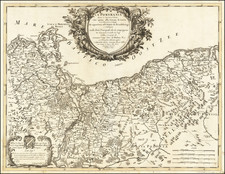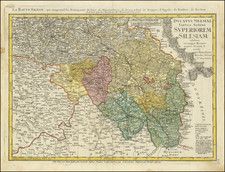Rare separately published battle map of the area around the island and Castle of Wollin (Wolin), engraved by Boschini in Venice.
The main map shows a fortified Wolin, with a military assault from below. The two inset maps show the wider area around Wolin on the Baltic.
Sargeant-general Johann Reichard Graf Starhemberg (1608-1661) is named as the commanding officer of the siege, working under the orders of the Imperial Field Marshal Ludwig Raduit de Souches (1606-1681).
Wolin was defended by Lieutenant Colonel Brun as commandant and Colonel (Georg Friedrich von Wolf-) Ramsdorf.
Wolin Castle
The castle at Wolin dates to at least the 12th Century. During the existence of the Duchy of Pomerania, the stone castle repeatedly served as a widow seat of the Pomeranian duchesses or as a residence for non-ruling members of the House of Griffins, such as Barnim XI in his younger years.
In 1620, Wolin Castle was meant to serve as the widow seat for Sophie of Saxony, the widow of Duke Francis, but it was in such a bad shape, that it had to be demolished and replaced by a new structure. Several outbuildings were damaged in the great city fire of 1628. When an inventory was taken in 1636, after Duchess Sophie's death, a brick building with an unfinished interior was found. The adjacent former monastery church was used as a granary.
The House of Griffins died out during the Thirty Years' War, and the castle came into the possession of the Swedish governor Johan Banér (1596–1641), whose heirs ceded it to the Swedish queen dowager Maria Eleonora. Her daughter, Queen Christina of Sweden sold castle and district of Wolin in 1654 to Count Clas Tott (1630–1674), who mortgaged it in 1655 to Count Christoph Karl von Schlippenbach (1624–1660).
The castle was badly damaged by Brandenburger and Imperial troops during the siege and storming of Wolin in 1659, in during the Second Northern War. The castle burned down in 1675 when Wolin was again conquered by Brandenburg and was never rebuilt.









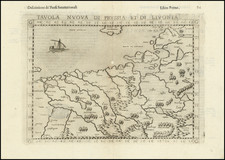
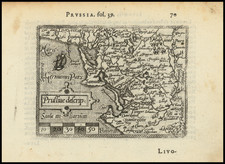
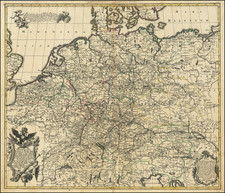
![[ Holy Roman Empire ] A Newe Mape of Germany Newly Augmented by Iohn Speed Ano Dom: 1626](https://storage.googleapis.com/raremaps/img/small/68482.jpg)
